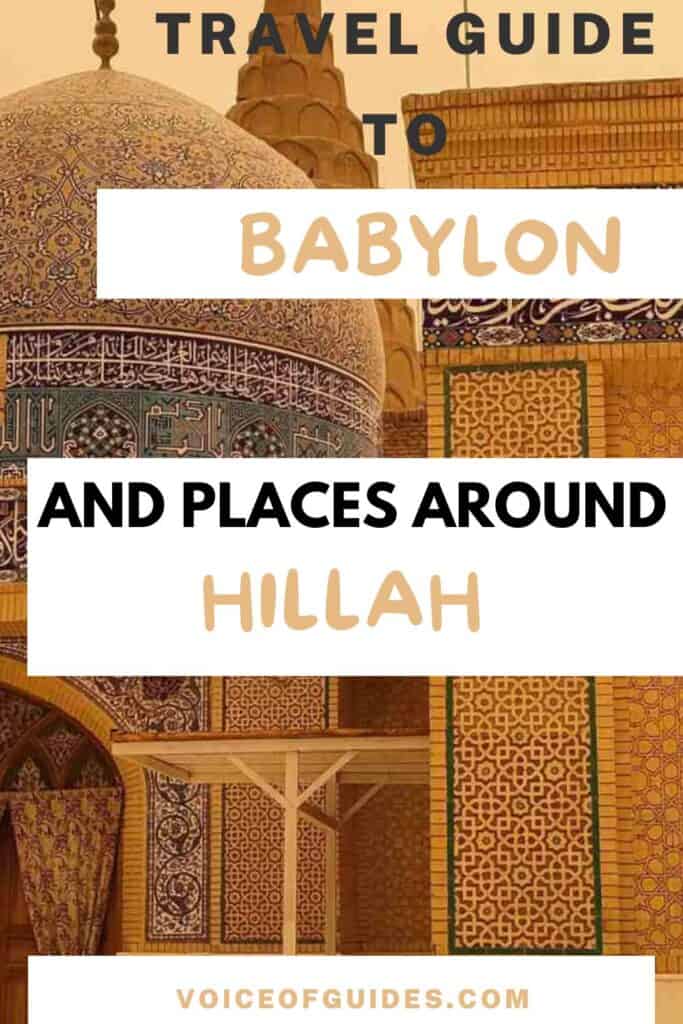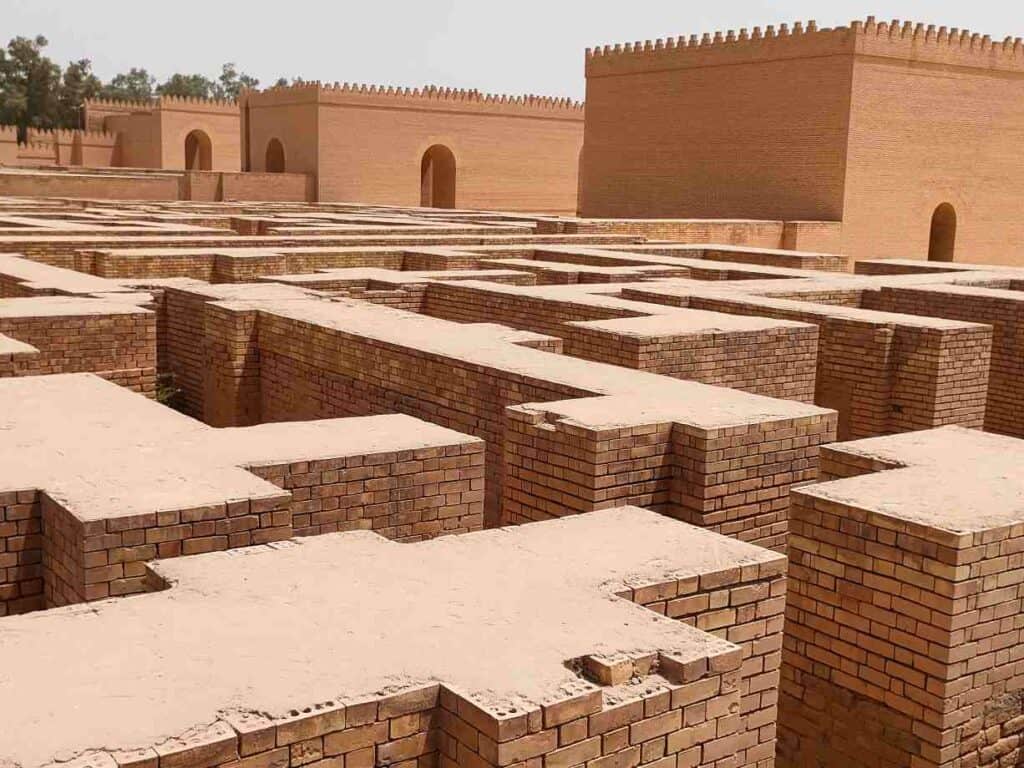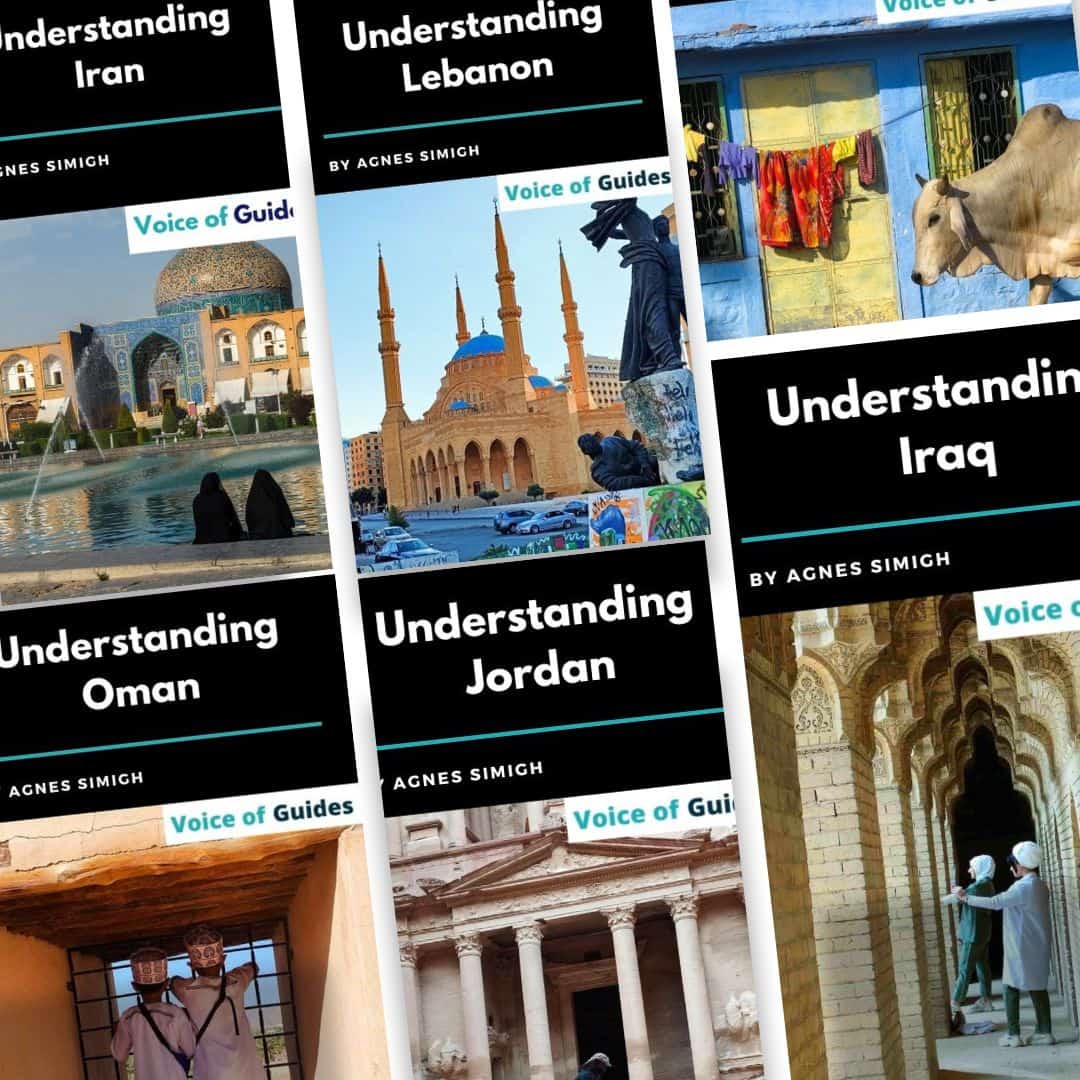This article may contain affiliate / compensated links. For full information, please see our disclaimer here.
Visiting the ruins of Babylon is considered one of the top and most beautiful things to do in Iraq, which is part of every Iraqi travel itinerary. Thanks to the Tower of Babel, the Hanging gardens, and the Code of Law of Hammurabi, Babylon is the most reputed ancient city and the place where Alexander the Great died. However, from an archeological point of view, its modern reconstruction ruined Babylon, and there is hardly anything left of the ancient part. It is still a must-see, but there are plenty of other things to do around Hillah. This travel guide helps you visit Babylon and discover all the interesting heritage sites around Hillah.
- Where is Babylon and how to go there?
- Things to know before visiting Babylon
- Saddam's palace overlooking Babylon
- Where to sleep in Hillah?
- Where to eat in Hillah?
- What to visit around Babylon
- Recommended books about Babylon and Mesopotamia
- Other articles about Iraq
- More articles about the Middle East
- Pin it for later!
Where is Babylon and how to go there?
To visit Babylon, which lies along the famous Euphrates River, you first have to go to Hillah city, 120 km south of Baghdad. From Hillah, you can get a short ride (20 minutes) to reach the heritage site of Babylon.
From Babylon: If you only visit the Babylon ruins, you can easily do it on a day trip from Baghdad.
However, if you plan to visit other things around Babylon and continue your trip to Karbala and Najaf, you should stay for the night in Hillah. I recommend that you plan your Iraq itinerary this way, as making day trips from Baghdad can be time-consuming due to the horrific traffic in the capital.
Shared taxi from Baghdad to Hillah: 10 000 IQD
From Karbala or Najaf: If you are coming from the south, you can easily go to Hillah/Babylon from Karbala (46 km) or Najaf (65km).
Shared taxi from Karbala: 5000 IQD
Shared taxi from Najaf: 5000 IQD
Entrance fee to Babylon: 25 000 IQD (this is the regular price for almost all sites in Iraq for foreign travelers) + an extra 1500 IQD for Saddam’s Palace.
Important: you can only visit Babylon if you have a visa to Federal Iraq. The Iraqi Kurdish visa is not valid for other parts of Iraq, including Hillah/Babylon!
Read this article about all you need to know before traveling to Iraq.
Things to know before visiting Babylon
Babylon’s history is divided into two parts: Old Babylon (1894 – 1595 BC) and the Neo-Babylonian Empire (606–539 BC), when Babylon regained its role as the leading city in the world.
Many scientists consider the civilization of Babylon and other cities in this valley to be the oldest recorded, dating back 8000 years. Sadly, almost nothing has been left of ancient Babylon apart from earthen hills. Within a few hundred years, it was eventually abandoned, deserted, and absorbed by the desert earth.
Most of what you see was constructed by Saddam directly on top of the over 2000-year-old remains. From an archeologist point of view letting trucks and shovels to site was a disaster. Still, it is considered as one of the most beautiful places in Iraq.
Insurance: Safetywing is a cheap travel and medical insurance that also covers COVID-related issues in most countries, including Iraq.
Flights: Use Google Flights or Skyscanner to book your flight to get the best flight offers.
Old Babylon
Old Babylon’s story started with the Semitic nomads who moved with their herds to the area between the Tigris and Euphrates. They settled here and finally converted Babylon into a glorious city, conquering the rest of Mesopotamia. But the Babylonian rulers were not obsessed with violent and aggressive expansion policies. They were known for their wisdom and knowledge. Old Babylon’s story ended when it fell under Assyrian control. Without a doubt, Babylon is the ancient city the most engraved in our memories.
Hammurabi, who called himself King of the Amorites, was the 6th king of Old Babylon who transformed it into the leading city of Mesopotamia during his 43-year-long reign. He increased the height of Babylon’s famous walls and extended and beautified the temples. However, his most memorable achievement was the code of law, which was not the first, but the most extensive and clearly written, with almost 300 paragraphs. The law was inscribed on a column of four tons of black diorite stone and was excavated in Susa, the Elamite capital (in today’s Iran) that they looted during a war with Babylon.
Hammurabi’s code of law was advanced and fair in some respect and included harsh penalties at the same time. False accusations and testimony entailed the death penalty; however, it was generally murder, adultery, or other crimes that were punishable by execution. It covered family, slavery, administrative, agricultural and administrative law and was based on the eye for an eye principle.
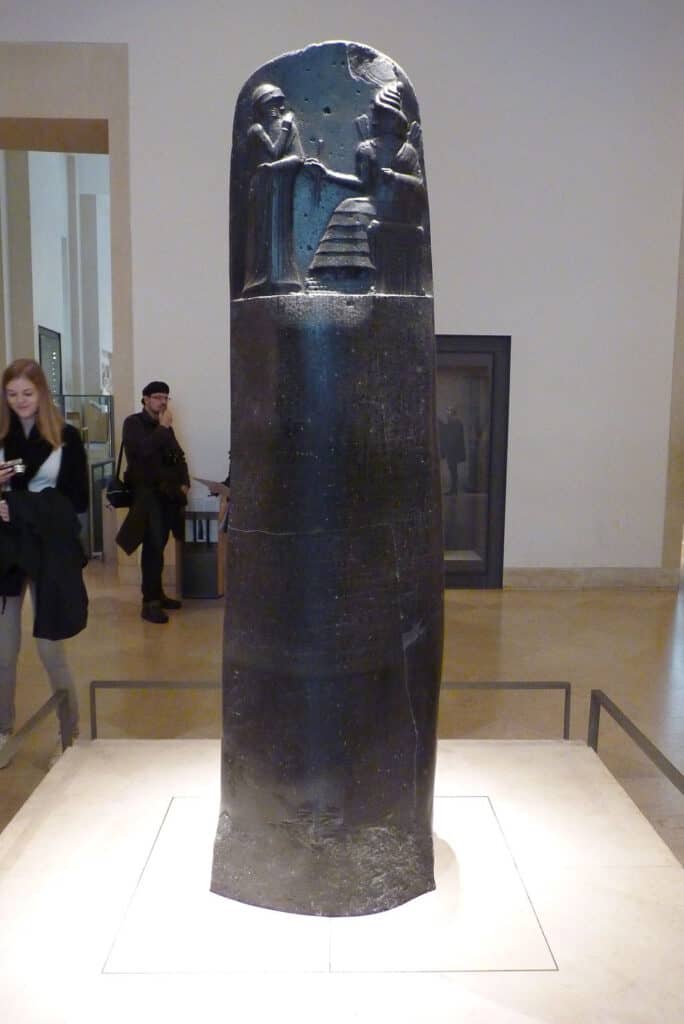
The code of law presumed innocence until proven guilty, investigated whether an offender intended to cause harm, and considered mitigating circumstances when a crime was committed. In these areas, he was a pioneer, as the Babylonians were in so many ways.
The most expansive part was the family law. If a man wanted to divorce his wife, who had borne him a child, he was obliged to give her dowry and a part of the income from field and property so that she could raise her children. When she brought up her children, she received an equal portion of all that was given to the children.
In the Babylonian Empire, religion and politics were intertwined. Hammurabi was also eager to spread the worship of Babylon’s God and placed him on top of the pantheon of gods in entire Mesopotamia. During Hammurabi, Babylon took the title of “holy city” from Nippur. The statue of Marduk was looted several times, and the Babylonians dreaded it as a sign of misfortune for their future.
Right after Hammurabi died in 1750BC, the Babylonian Empire fell into decay and lost its dominance over Assyria, though it remained the most sacred city of Mesopotamia.
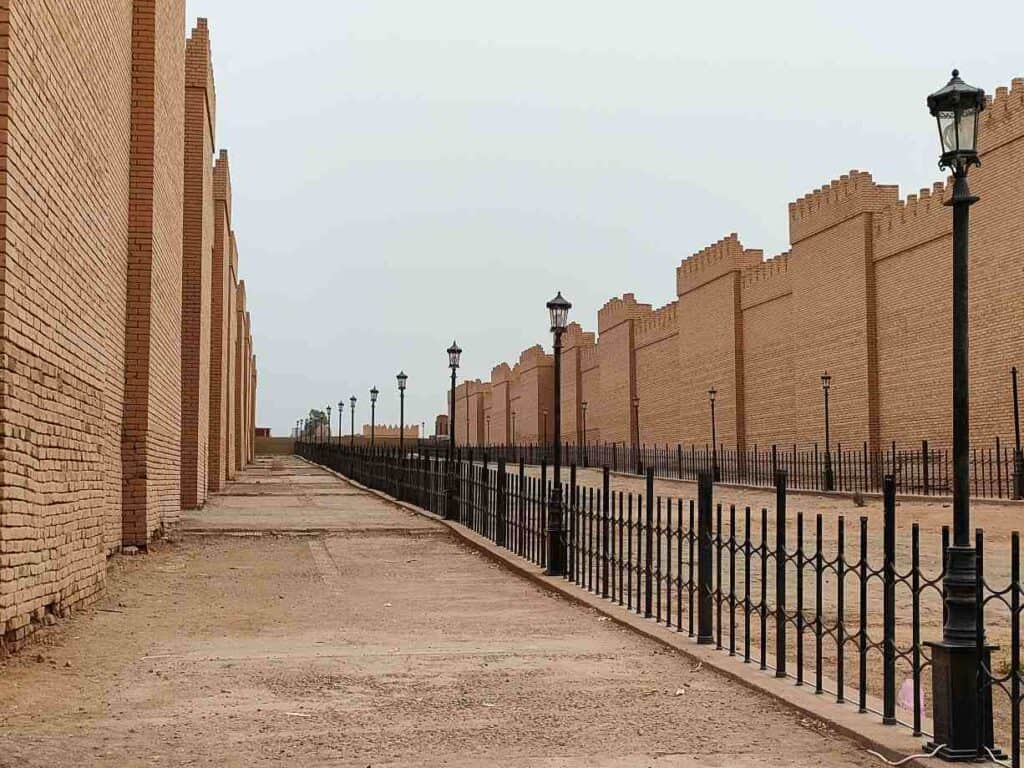
The Neo-Babylonian Empire
The Medean forces, strengthened by the fall of the Elamites, attacked and brought a sudden end to Assyria, the state of Ashur. This made it possible for rival Babylon to restore its former leading position in Mesopotamia.
Nebuchadnezzar II was the most famous ruler of the second period of the Babylonian Empire when it managed to regain its power for a short time (606-539BC) and marked the Neo-Babylonian period. He built a magnificent summer palace and the Hanging Gardens. During the Babylonian-Jewish war, he burnt the sacred Temple of the Jews that Solomon built and forced tens of thousands of Jews from Judah into exile. It went down in history as the Babylonian captivity (~598 – 538BC). This is why Mesopotamia gave home to the largest Jewish community for centuries, not Jerusalem. The holy book, the Talmud, was also written during this period. After the captivity, they managed to return with the help of the Persian Cyrus the Great and rebuilt their “Second Temple”.
Since religion was integral to Babylonian governance, Nebuchadnezzar II restored the temples and shrines. He reconstructed the entire Sumer and Akkad, but his main focus was Babylon, a city of 100 000 inhabitants, and elevated it to the world’s leading city again. It was the most splendid city on earth at that time that ruled over Mesopotamia and Assyria and extended its power to present-day Saudi Arabia, Syria, Lebanon, Israel, Jordan, part of Turkey and Iran.
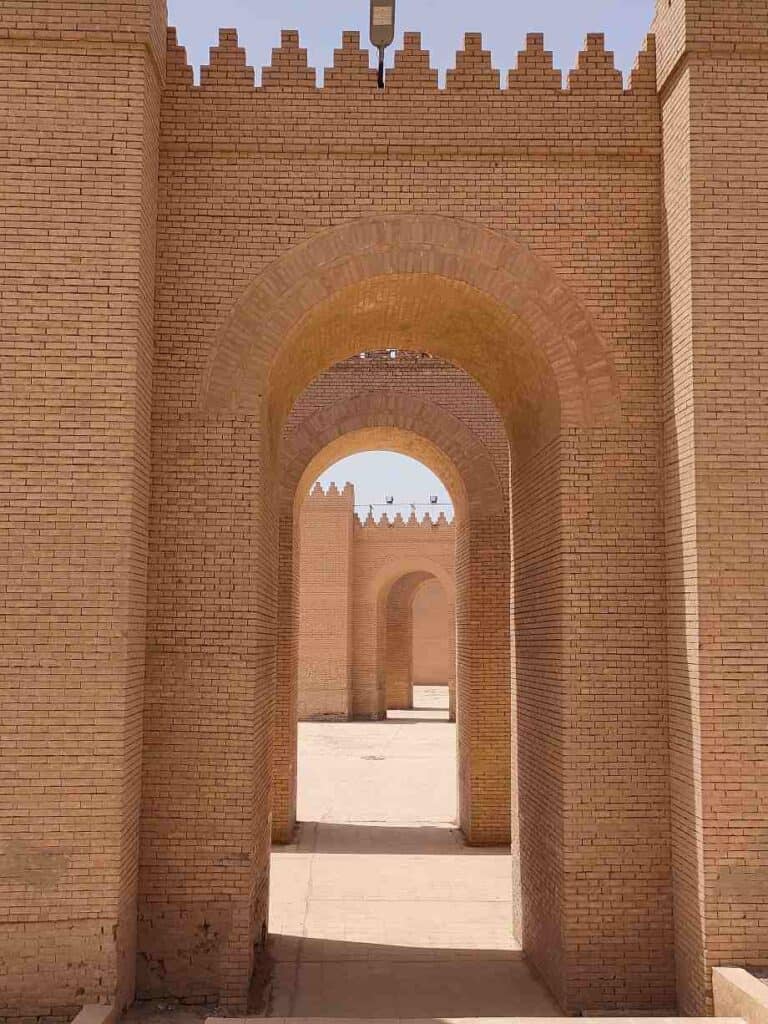
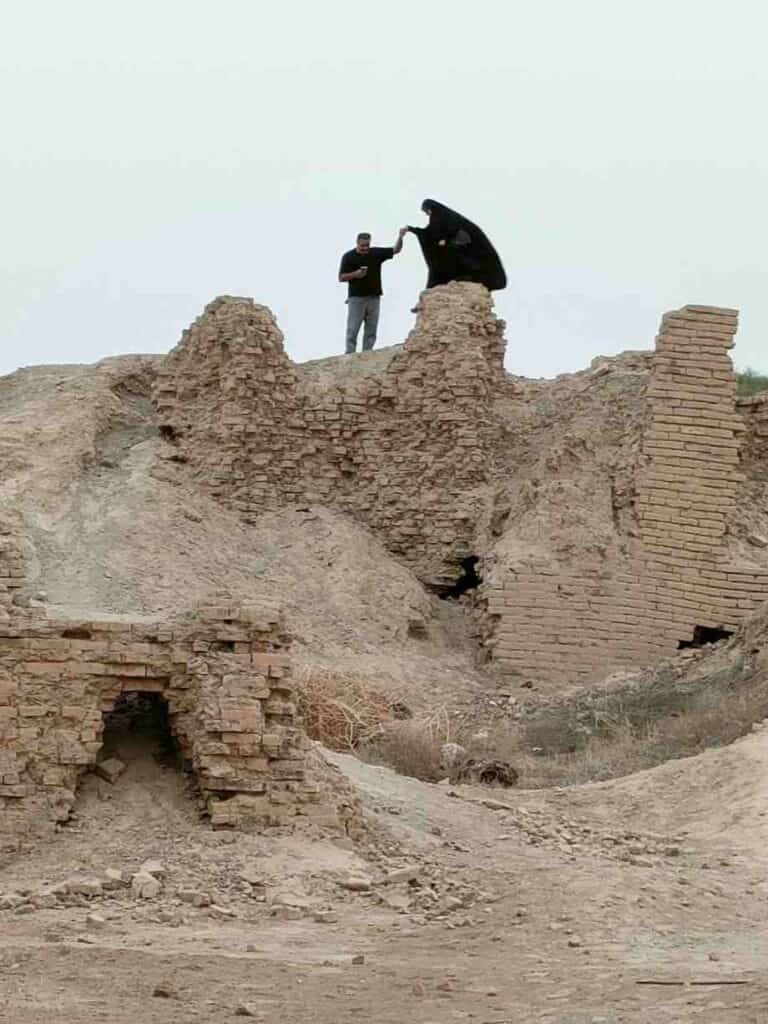
The most memorable parts of Babylon
– The double walls surrounding the city
– The Hanging gardens
– The tower of Babel
– Etemenanki, the 90-meter-high ziggurat with E-Sagila, the temple of Marduk
– Royal palaces of Nebuchadnezzar
– Ishtar gate
– The processional way
– The Lion of Babylon
E-Sagila, the temple of Marduk, stood in its center, but the chief god had over 50 shrines in Babylon, and more than 40 temples stood inside. It was separated by an expansive plaza from the most important establishment of Babylon, Etemenanki. It was a 90-meter-high ziggurat that many supposed to have been the so-called Tower of Babel.
The original ziggurat was probably built by the Amorites in Old Babylonian times but completed by Nebuchadnezzar II.
Babylonians celebrated the New Year with the Akitu Festival. At the beginning of the Akitu Festival, the priests carried the statue of Marduk and other gods in a grand parade along the Processional Way and placed them in the Akitu temple. During the yearly 11-day-long Akitu festival, which was the main event of the year, the king expressed his respect for Marduk and other Gods being superior to every human being. This is how they ensured a good harvest and prosperity for the following year.
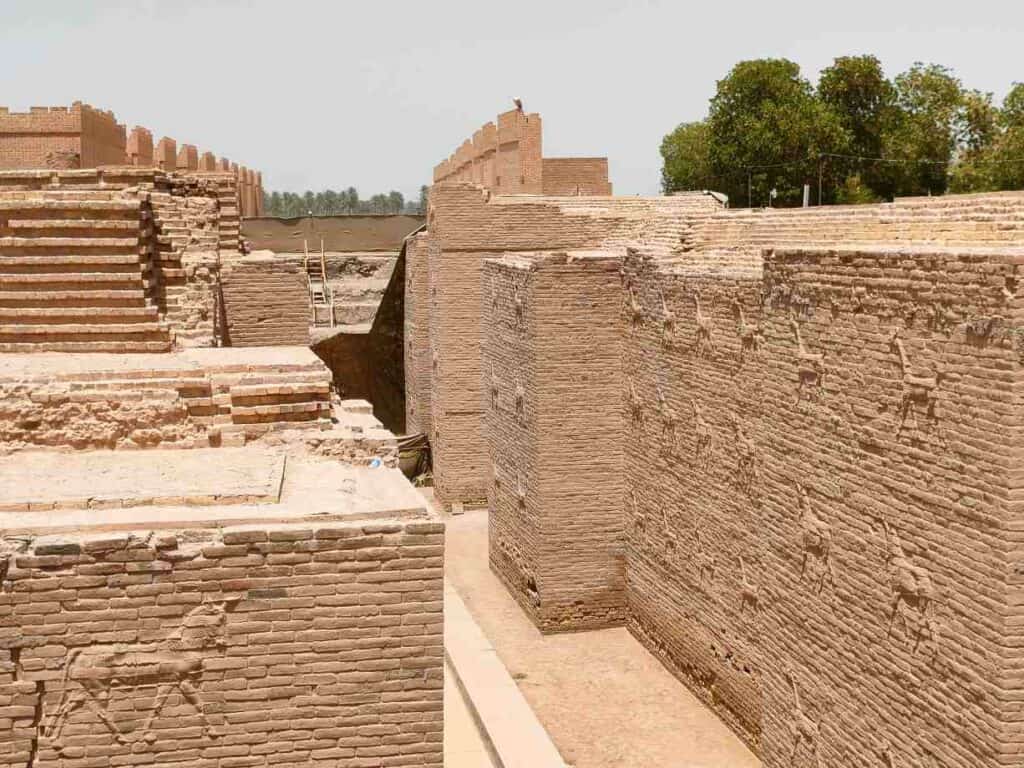
Babylonians were extremely Godfearing. They believed if they neglected the idols of the Gods and failed to do the proper rituals, or if the statue got stolen, as it happened many times, it would attract catastrophe like drought, disease, or military disaster, and misfortune to the people of Babylon.
Religion and government were closely intertwined in the Empire.
Nebuchadnezzar II also built Babylon’s Hanging Gardens to please his wife, Amytis, who missed the mountains of her Iranian homeland. It has terraced sides appearing as steps up to heaven. The Hanging Gardens were one of the seven wonders of the ancient world.
The most precious inner parts included the private palaces of Nebuchadnezzar, the processional way surrounded by immense walls covered with blue-glazed tiles featuring golden mosaics of lions, bulls, and dragons and leading to the Temple of Marduk from the 18-meter-high Ishtar Gate.
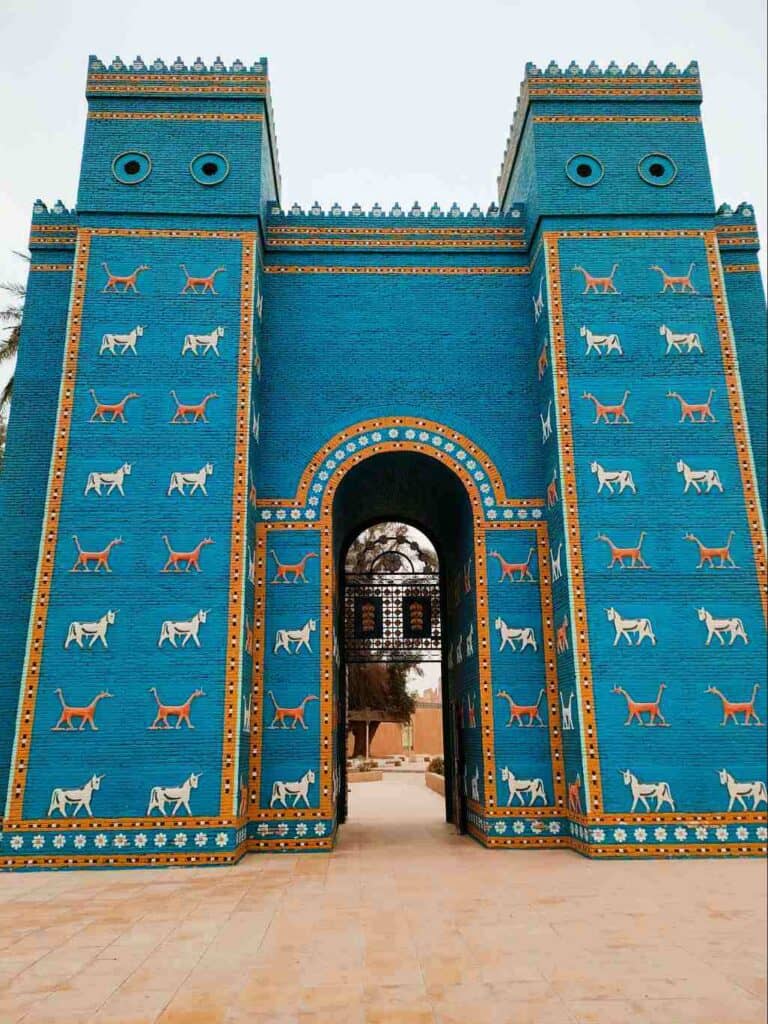
Insurance: Safetywing is a cheap travel and medical insurance that also covers COVID-related issues in most countries, including Iraq.
Flights: Use Google Flights or Skyscanner to book your flight to get the best flight offers.
The dragon-like mušḫuššu with a snake head and tail, a scaled lion-like body, and frightful talons on its rear feet represented Marduk. The impressive gate honored goddess Ishtar (Inanna) with a glittering blue facade decorated with bulls and dragons in white and ochre with the inscription of the king about his large-scale constructions with cedar and bronze gates.
Robert Johann Koldewey, a German archaeologist, unearthed and transported the entire ceremonial portal, known as the Ishtar Gate, and part of the processional way leading to it to Germany, and reconstructed it from the original excavated multicolored tiles. It is now exhibited in the Pergamon Museum in Berlin, while the one in Babylon in, Iraq is a copy of that.
The maze of sand-colored walls in the center of Babylon is the most peculiar part, which made any invaders breaking into the palace blocked by dead ends. Today young Iraqi couples appreciate it as an ideal place to find intimate moments.
The “Lion of Babylon”, a national symbol of Iraq, is a 2600-year-old statue depicting a lion lying over a human. It is unsure if this was also constructed under Nebuchadnezzar II. Historians believe that originally there was a saddle on the back of the lion with God Ishtar standing or sitting on that.
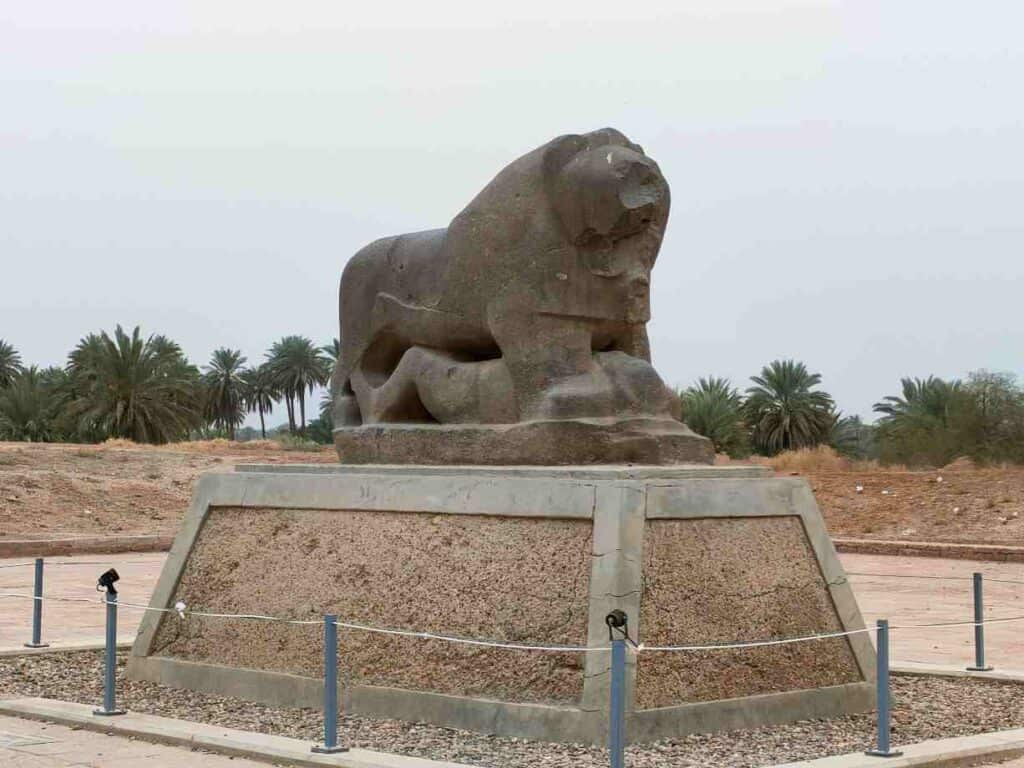
The extremely prosperous but short Neo-Babylonian Empire fell to the Persians only after 50 years. According to the popular version, the arrival of the Persians was a surprise, and they easily captured the city, according to Herodotus. However, the famous historian was born only 50 years later. Others say the peaceful occupation was because the citizens who longed for changes welcomed the Persian conquest.
The monarch ignored Babylon, and instead of Marduk, he preferred other Gods. He moved his seat to an Arabic oasis town, Tayma, and thus missed the annual Akitu festival.
For the first time in history, the land of the two rivers, the cradle of civilization, lost its independence and was annexed to a foreign empire, the Ancient Persian Empire. They used Pasargadae, Ecbatana, Suza and Persepolis as their capital in present-day Iran. Babylon lost its former status and was reduced to a regular province. But life continued with traders exchanging goods and performing religious rites. The Persian rules adopted several things, including written language, Babylonian Akkadian, and Mesopotamian Aramaic from Babylon.
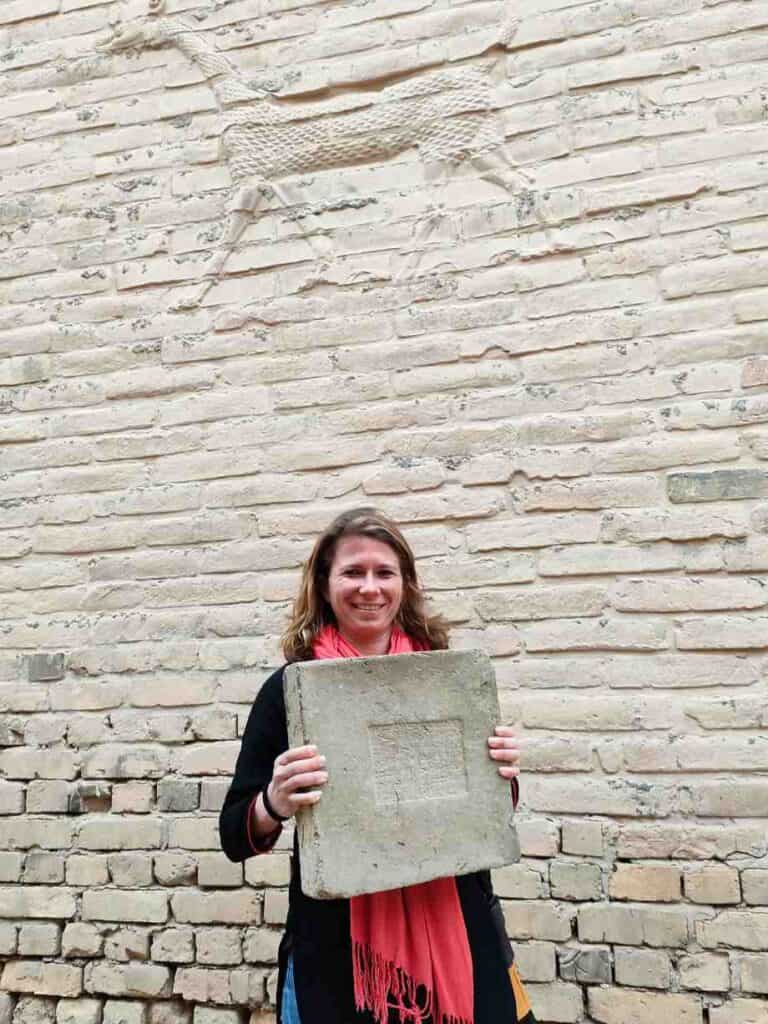
Saddam initiated such comprehensive reconstructions that it has become the most restored site in Iraq, with bricks inscribed with his name on it like Nebuchadnezzar did during his constructions in ancient Babylon. Although building on top of ancient ruins in this was enraged historians and archeologists. Saddam wanted to be identified with the great ancient rulers of Mesopotamia and revive once the world’s biggest metropolis. Many of the stones of the Ishtar gate are also engraved with his signature.
Broken pieces of pottery and coins are still lying around. Babylon was forgotten until excavations started in the 20th century, and a large part of the discovered treasures have been delivered to prominent European museums, like the Louvre in Paris. Until now, over 70% of Babylon is unexcavated.
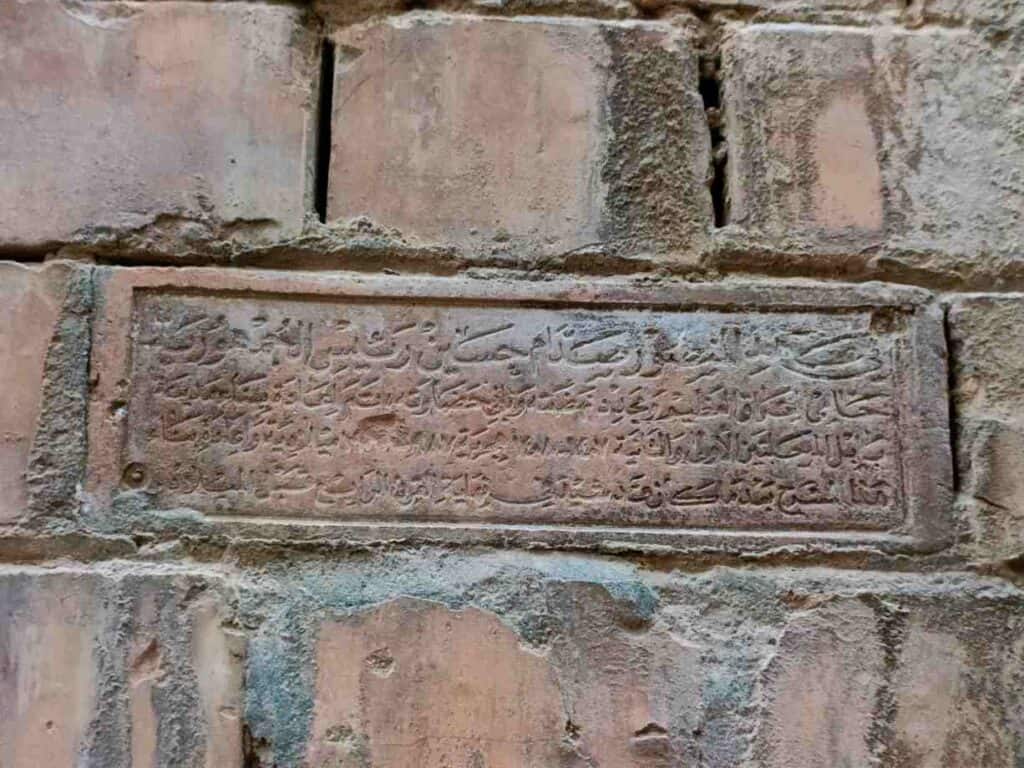
Why was Babylon the wealthiest city on earth?
The achievements of Babylon were unparalleled at that time, and its knowledge was copied and transferred around the world.
Babylon was not rich because of its favorable location or its abundance of natural resources. It spread along the Euphrates River in a flat, arid valley without mines and forests, and there was not enough rain to raise crops. The Babylonians created wealth without adequate resources with extreme resourcefulness. They built the world’s first dams and irrigation canals to divert the water to the fields and make the area fertile.
The bestseller “The richest man in Babylon” is about wealth and financial wisdom set in ancient Babylon, where Arkad, the wealthiest man, shares his advice on how to make money. It is not a coincidence that the story transmits its message through Babylon, which was once the wealthiest city in the world because its people learned how to make money.
The achievements of Babylon
The Babylonians studied the earth’s rotation using mathematical models, predicted lunar and solar eclipses and the movement of planets. They achieved incredible results in mathematics and knew how to measure the diameter and circumference of a circle and calculated pi (π) to a value of 3.125. Babylon hosted one of the world’s first known libraries.
The description of the Greek historian Herodotus is the only one available to us about Babylon at its peak, although he was born 50 years after. He talks about the incredible fertility of the region and describes Babylon as a breathtaking city with such wide walls that chariots could ride around.
A Babylonian pharmacy inventoried about five hundred medicines around 1000 BCE. There were no hospitals, but doctors treated patients in smaller clinics, with beds for those requiring overnight care and surgeries.
Babylon as a list was lost, but not its wisdom, which was preserved on clay tablets baked into a solid tile. These tablets gave us insight into local life, laws, royal decrees, and even poetry. Archeologists recovered hundreds of thousands of them.
Saddam’s palace overlooking Babylon
On top of the hill next to Babylon stands one of Saddam’s many residences, overlooking the ancient ruins. He built the palace in 1991 during a severe economic embargo imposed on Iraq after the Gulf War. A winding ramp leads up to the palace that recalls the pyramid shape of ancient Sumerian ziggurats.
It was the headquarter of US troops between 2003 and 2011 during the invasion after the Second Gulf War. These palaces were not open to the public, and an average Iraqi person had no idea about the megalomanic lifestyle Saddam lived inside. Over 100 palaces scattered around Iraq, some of them he only used once or twice. For security reasons, he never disclosed where he would sleep the day after, and more palaces prepared for his arrival. Most palaces were damaged and looted during the wars, like this one in Babylon, and never renewed.
Despite graffiti covering most parts of the palace, the marble columns and the ceiling frescos give an idea of the luxury the president enjoyed here. Don’t forget to include it in your program when you visit Babylon.
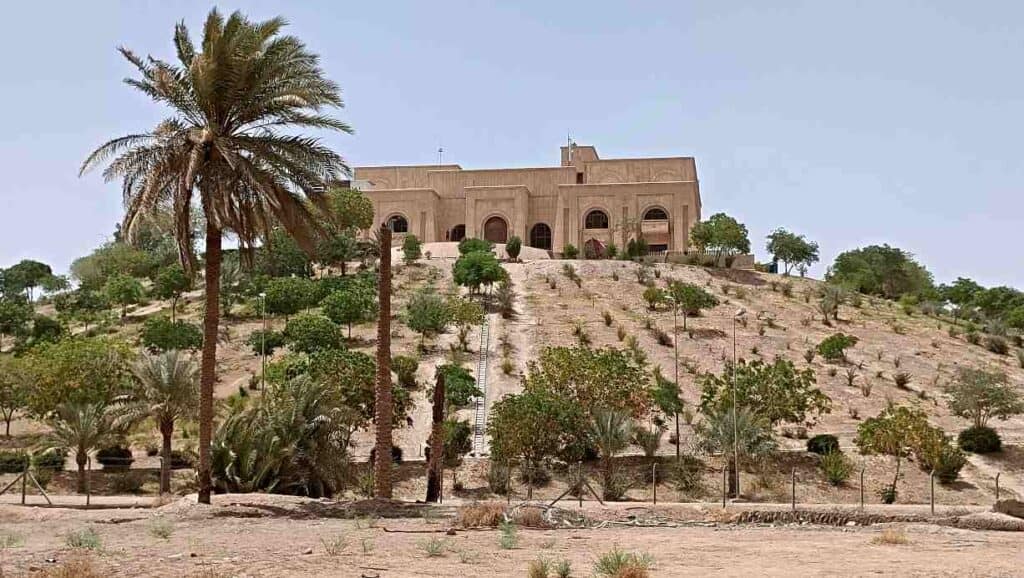
He celebrated his 53rd birthday in 1990 with the Babylon festival with immense spectacle.
The most incredible part of the celebration was when large crowds dressed in ancient Sumerian, Akkadian, Babylonian and Assyrian costumes prostrated themselves in front of a wooden cabin. The doors revealed a palm tree from which fifty-three white doves flew up into the sky. Beneath them was a baby Saddam floating down the stream in a basket. He associated himself with Sargon to represent himself as a successor to the most famous ancient Semitic emperor.
Saddam identified himself with the Babylonian ruler, Nebuchadnezzar, and spent millions building a massive reconstruction of Babylon.
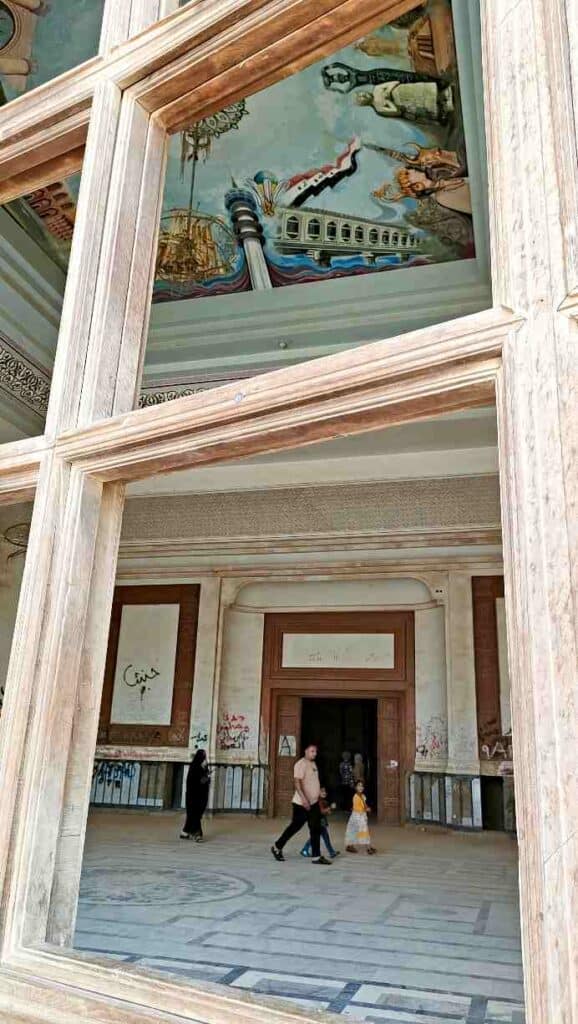
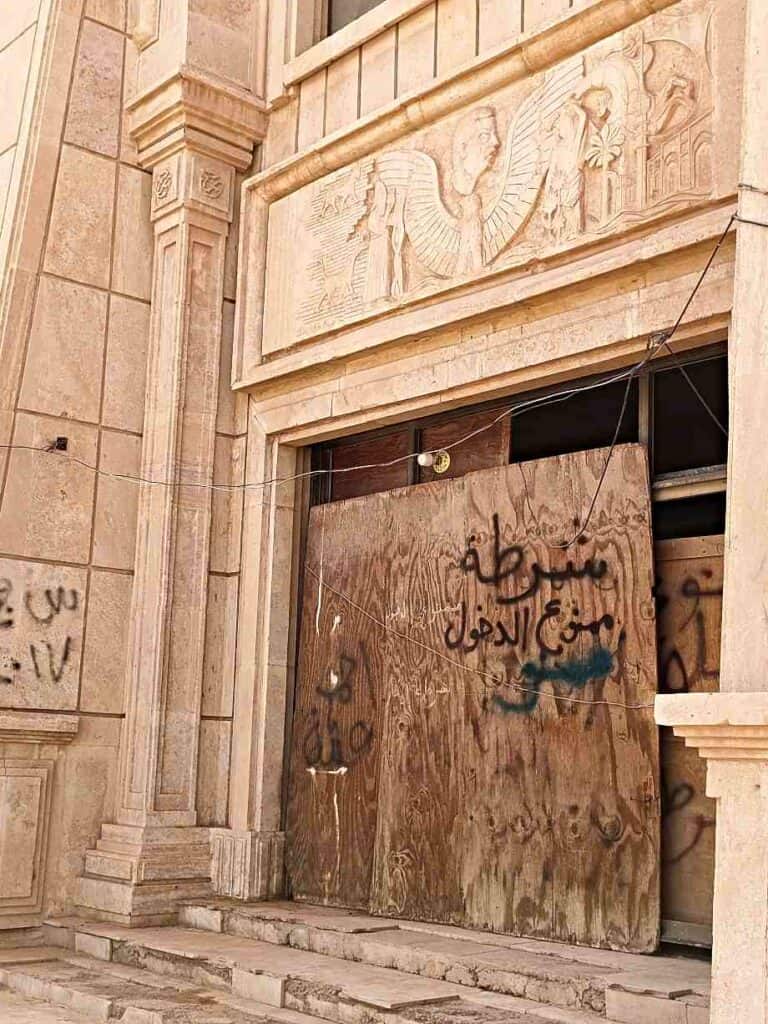
“Yesterday Nebuchadnezzar, today Saddam Hussein” was the Baath party’s propaganda during the Iran-Iraq War. His initials are found in Arabic calligraphy on the palace’s outer wall, as well as his face in the middle of a sun image.
He also reconstructed several other archeological sites, like Niniveh, Hatra, Nimrud, Ur, Samarra and Ctesiphon, but Babylon was the most important. This was a way to strengthen patriotism during the war against Iran.
Next to the Babylon heritage site, the theater gives home yearly to the Babylon International Festival, which began in 1985 but was the US invasion of Iraq. After 18 years of forced break, they organized it again in 2021.
Where to sleep in Hillah?
Where to eat in Hillah?
Shakespeare and Co. (Café Restaurant – Chocolates)
Da Vinci Restaurant and Café (مطعم و كافيه دافنشي)
Hillah has some extraordinary, sweet shops like Chocolate Saray and Toot Fresh.
Hillah has a breakfast specialty, bean in oil, that you should try. One good place that gets packed with locals having that for breakfast.
محمد البغدادي ابو الكبة (Muhammad Al-Baghdadi)
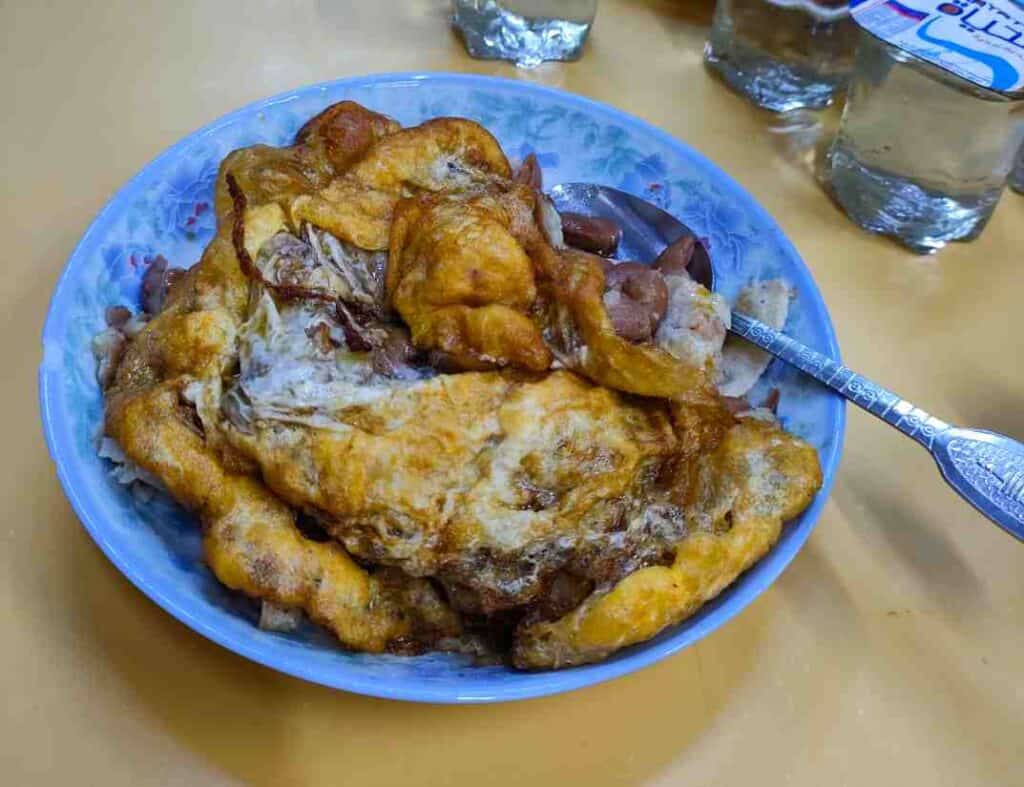
What to visit around Babylon
1. Kish archeological site (20 km from Babylon)
After the Great Flood, Kish was the first city to hold “kingship,” or regional dominance. In addition to Uruk, Ur, Eridu, and Kish, about eight other large city-states sprang up in ancient Sumer. Kish was the capital of King Sargon, the founder of the Akkad Empire. The city was close to where the Tigris and Euphrates approach each other most closely, only about 50 kilometers apart, which repeatedly caused severe floods.
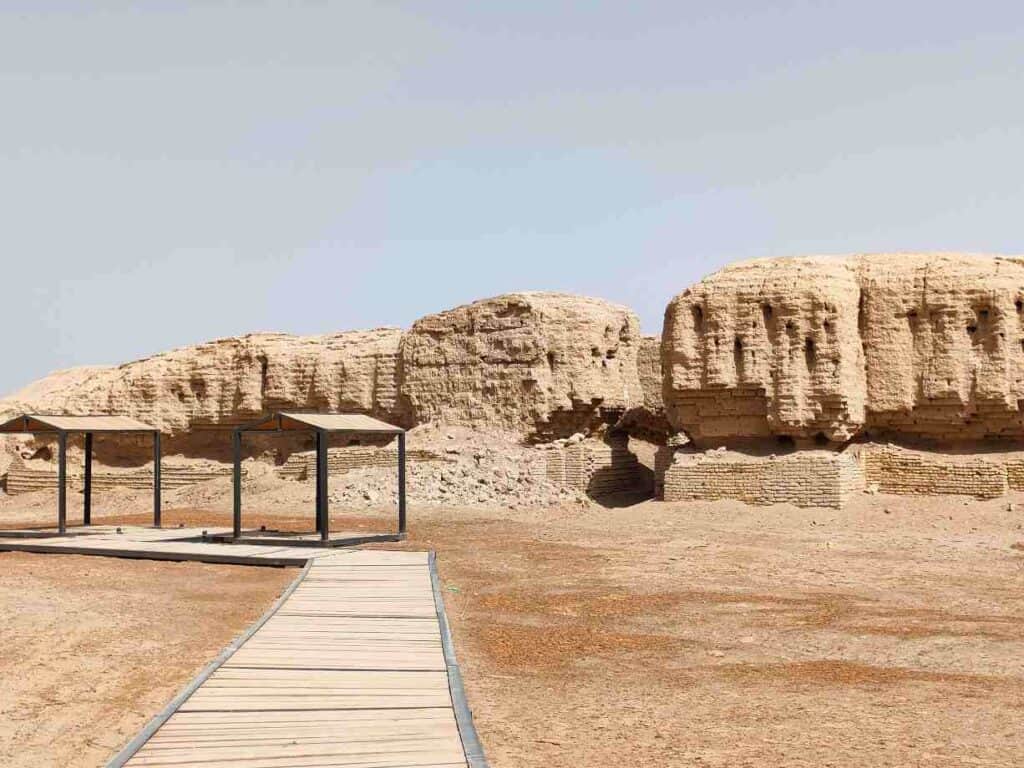
Like many other heritage sites, Kish is no more than deserted hillocks today. Kish was a prominent city-state during the Sumer period in the 3rd millennium BC, but Uruk finally overthrew the Kish kingdom.
If you are a history fan interested in archeology, head to Kish when you visit Babylon. However, for an average traveler, visiting Uruk and Nippur are much more fascinating.
How to go there?
You can go only go there by private taxi. A fence surrounds the area, but you can enter without an entrance fee. You will most probably stroll around alone.
2. Borsippa (Birs Nimrud) and Prophet Ibrahim’s shrine (30 km from Babylon)
For long, the ruins of Borsippa were believed to contain the Tower of Babel. But later, they discovered that the tower-shaped 52-meter-high structure from the 6th century BC is the archeological site of a ziggurat with a temple dedicated to the son of the great Marduk, God Nabu. Borsippa was never a prominent city but was always dependent on Babylon. The temple was destroyed in 484BC during a revolt against the Achaemenid king Xerxes. Inscriptions tell that Nebuchadnezzar II restored the Nabu temple and the ziggurat with bricks covered with precious lapis lazuli bricks.
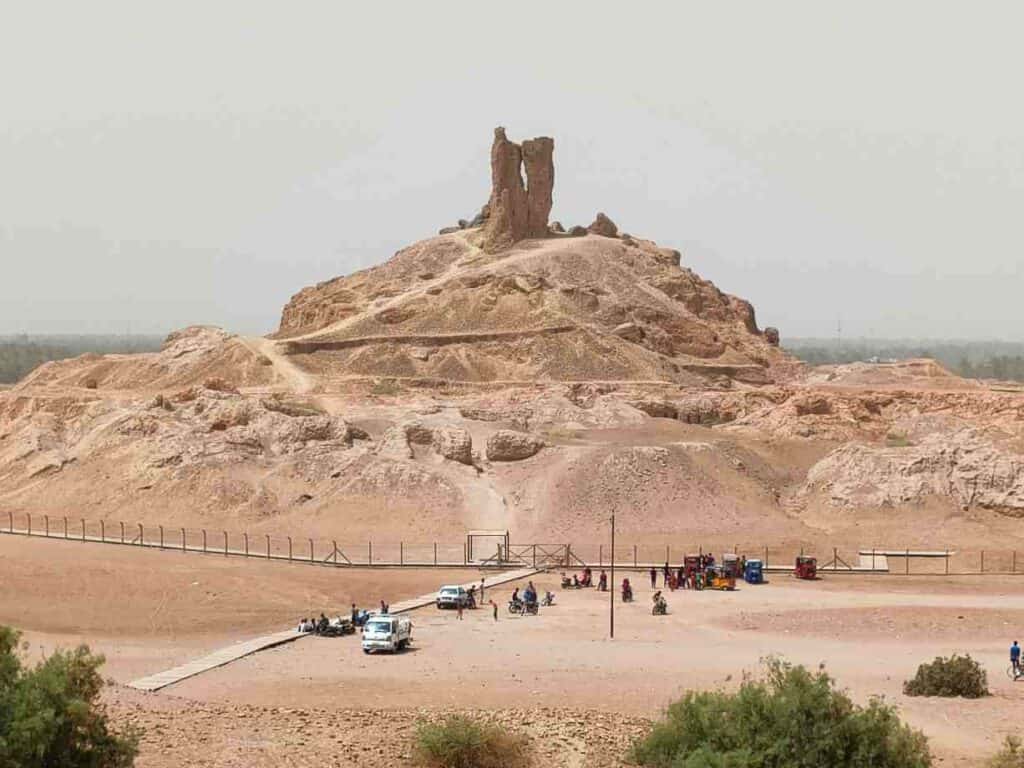
3. Tomb of Ayoub (17 km from Hillah)
The region of Babylon has an unusually high number of shrines of prophets and saints who passed through or lived here. One of them is the shrine of Nabi Ayoub, the Prophet Job, the prophet chosen by God. He was the most faithful man to God, and Satan attempted to turn him away from God. Even when Satan afflicted Job with illness and misfortune to test his loyalty, he refused to turn away from God.
Apart from Iraq, he also has a shrine in Syria and Oman.
How to get there?
The shrine is located along the Hillah-Najaf road and is accessible by private car.
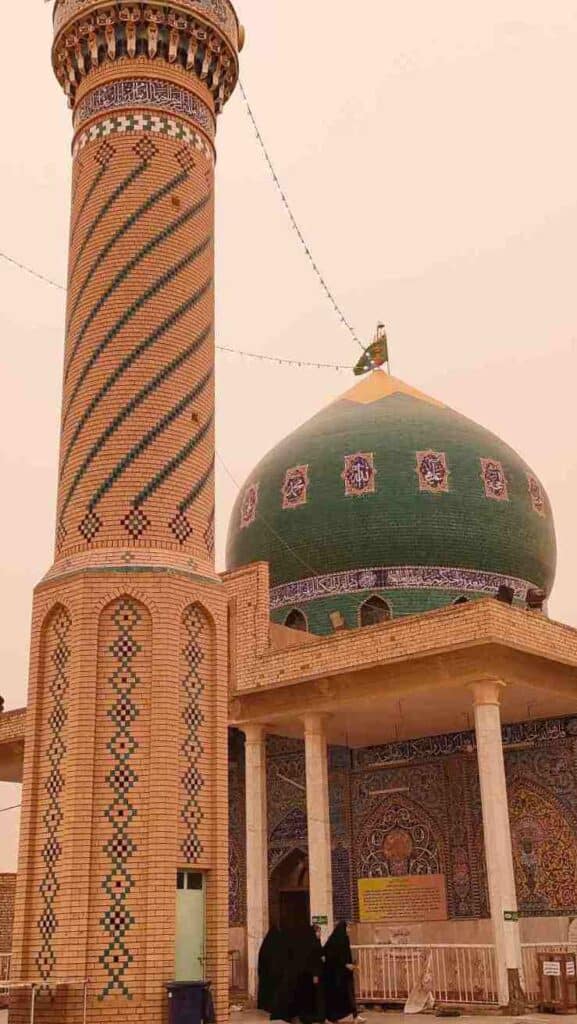
4. Tomb of Abu Bakr ibn Ali
Close to Borsippa and the tomb of Ibrahim is another shrine of Hasan ibn Ali, one of the sons of Ali who died during the Karbala massacre on the day of Ashura. It is the most important religious festival for Shia Muslims that is followed by Arba’een, when millions of pilgrims gather in the nearby holy city of Karbala.
Like other shrines, it contains the glimmering tomb of the saint that men and women can approach in separate sections.
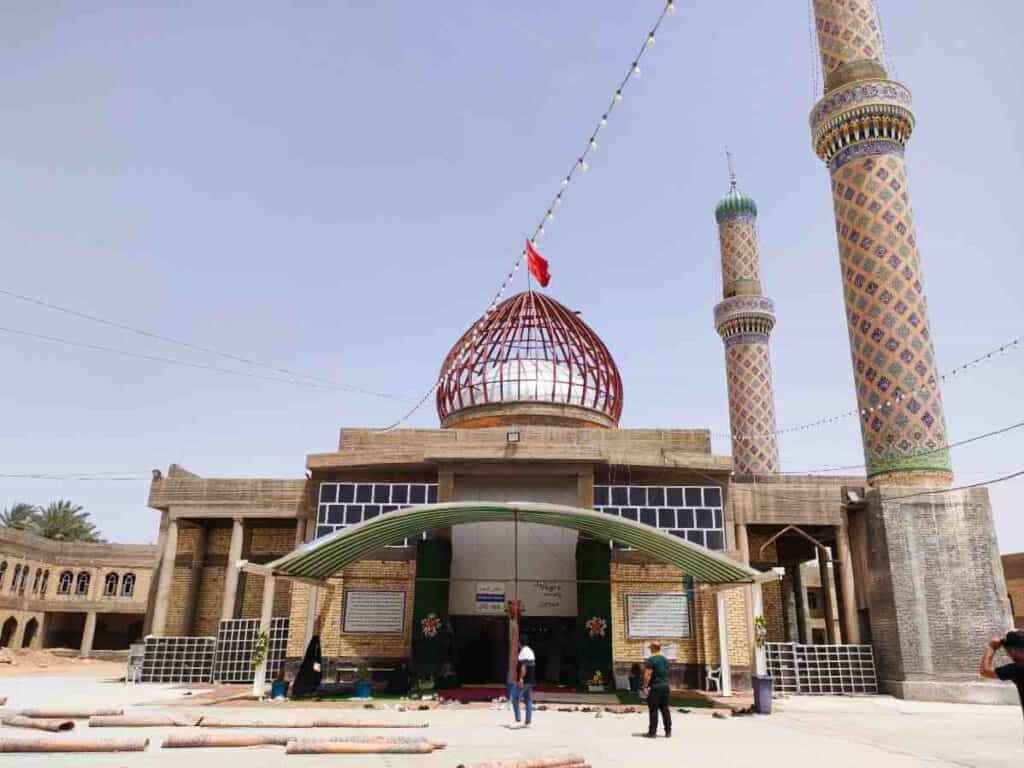
5. Al Kifl- Ezekiel’ tomb
Kifl was a positive surprise for me during my travel around Iraq. Most travelers skip it as they continue from Hillah/Babylon to Kerbala and then to Najaf.
Until the 1950s, Kifl was the most important pilgrimage site for Iraqi Jews since ancient times, who came to visit it, especially during Passover. The Jewish communities of Iraq were once the largest in the Middle East.
Ezekiel’s tomb is now part of the An-Nukhailah Shi’ite Islam Mosque in the town of Kifl. It contains the tomb of the Muslim Prophet Dhul-Kifl (hence the name of the city), who is considered to be Ezekiel.
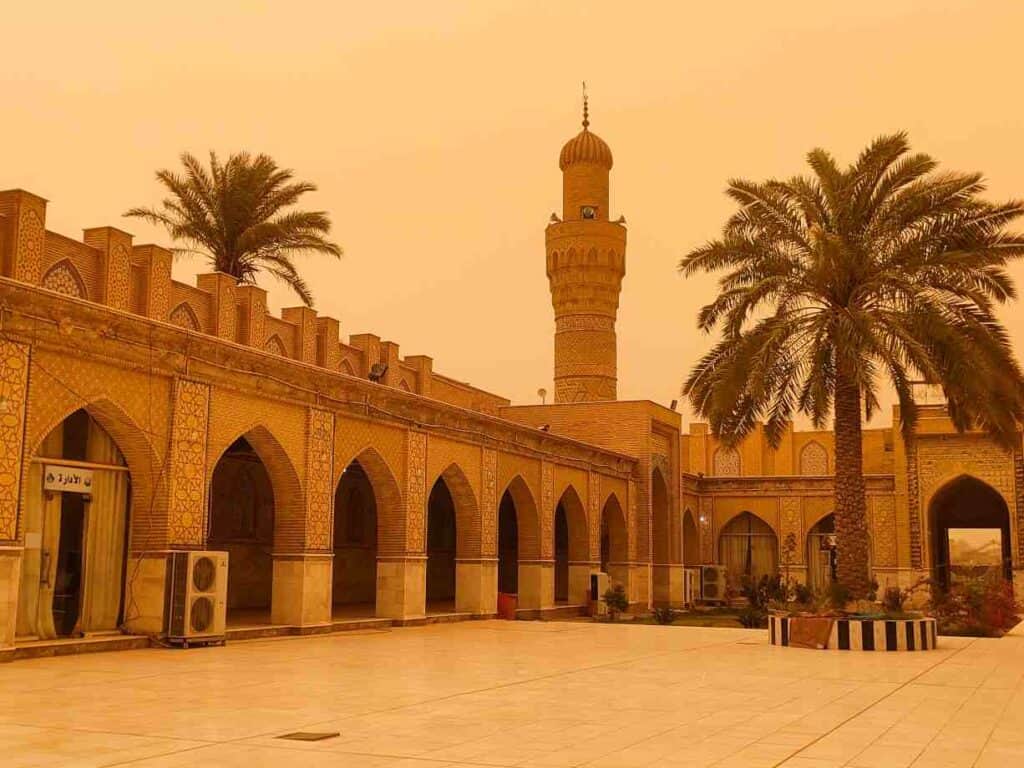
Ezekiel is mentioned in Jewish, Christian, and Muslim scriptures alike. He lived among the Jews exiled to Babylon in the 6th century BC, which went down in history as the “70-years long Babylonian captivity”. Prophet Ezekiel warned of Jerusalem’s destruction and foretold Israel’s restoration. The Prophet could never return to his homeland. According to the traditions, he died in 569 BC in Kifl, where he was buried. Abraham is said to have visited Ezekiel’s grave.
The Ilkhanid Sultan Öljaitü added a minaret and a mosque in the 14th century, so the traditional Jewish sacred site became an Islamic place.
In the 1860s, Muslims tried to gain full control over the site, while the Jews argued that they had owned the sacred place for over 2000 years. After the end of Saddam’s regime, the courtyard of the former synagogue was converted into a Muslim prayer site. In addition, some Hebrew inscriptions inside the tomb were replaced with Koranic verses. However, there are still a few Hebrew scripts on the wall under a dome with medieval Islamic floral designs. Inside the shrine, there is a small niche called the “Gate to Palestine,” which was a holy place for the Jewish pilgrims. They possibly kept the Torah there. The complex is a strange mix of a Muslim praying site with Hebrew inscriptions.
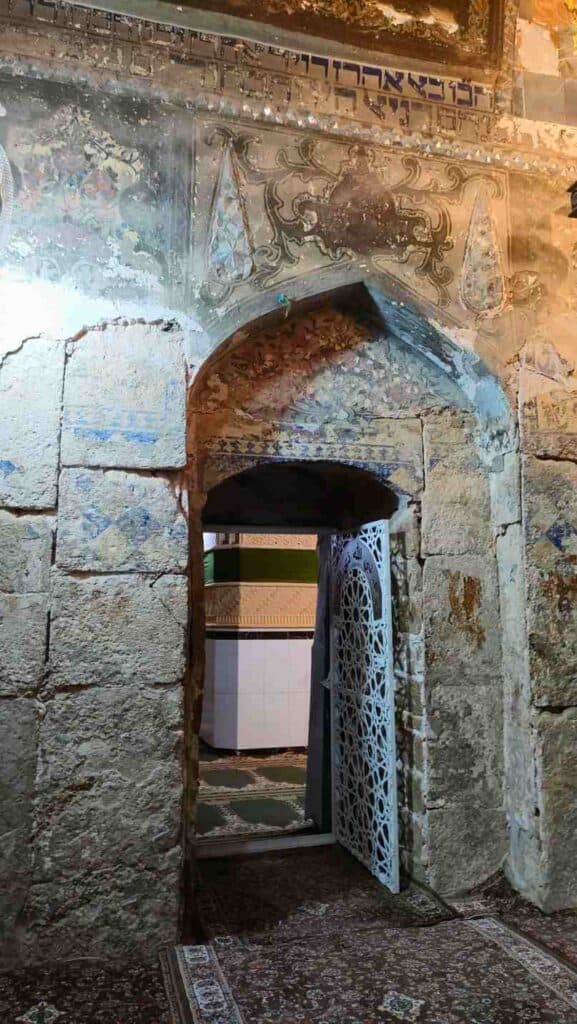
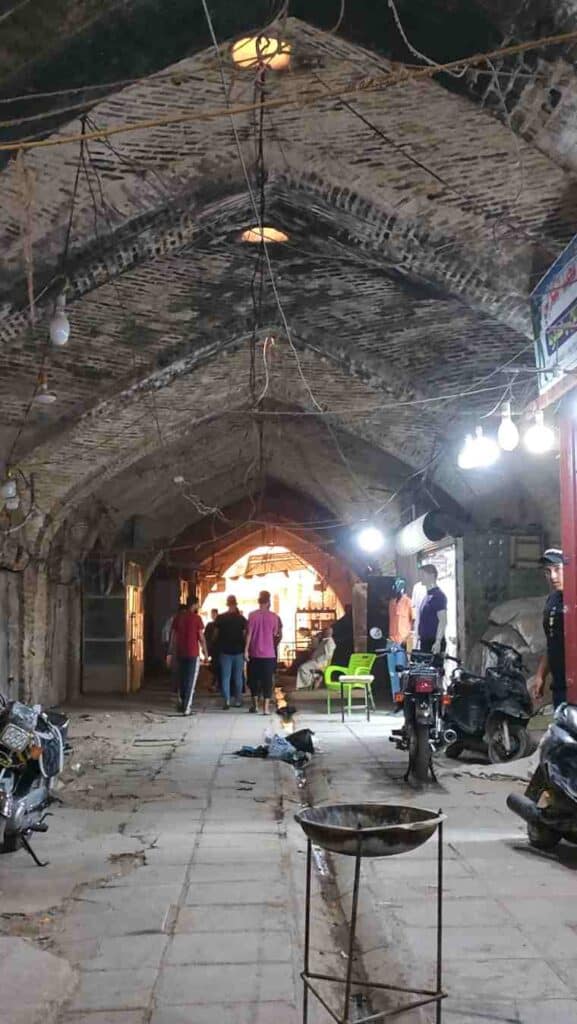
In the mosque section of the shrine are the tombs of four of the Prophet Jeremiah’s companions as well.
Today the shrine, its dome, and an old leaning tower are the only remaining parts of the original synagogue. Equally fascinating was the ancient bazaar next to the shrine that is said to date back to Ezekiel’s time.
It was another day of sandstorms when the dust-colored the air orange, but it even gave a unique, mysterious perspective to the place. I definetely recommend that you also include Al Kifl in your Iraq itinerary once you visit Babylon.
How to get there?
Kifl is a little off the road, halfway between Hillah and Najaf, although not more than 30 km from either.
Recommended books about Babylon and Mesopotamia
1. Paul Kriwaczek: Babylon Mesopotamia and the Birth of Civilization
2. History, Enthralling. The Babylonian Empire
3. The richest man in Babylon
Here is a list about other recommended books about Iraq
I hope you found this travel guide about visiting Babylon useful. Despite mainly being the result of Saddam’s reconstruction. It is one of the best places in Iraq, and you must include it in your Iraq itinerary. You can visit it on a day trip from Baghdad or Karbala and Najaf. However, you should stay overnight in Hillah if you also want to see other things near Babylon, like Borsippa, the tomb of Ezekiel in Al-Kifl, or the tomb of Ibrahim.
Other articles about Iraq
All you need to know before traveling to Iraq
What to visit in Baghdad in 3-4 days
The best books to read about Iraq (constantly updated)
Visiting Lalish, the holy place of Yezidi people
More articles about the Middle East
Lebanon
10-day itinerary to visit Lebanon
How to spend 2-3 days in Beirut
Travel guide to Tripoli, Lebanon
Best books to read about Lebanon
Traveling around Lebanon during the economic crisis
Iran
What you can and cannot do in Iran
45 things you must know before traveling to Iran
The best books to read about Iran
The best 2-week itinerary in Iran (the classical route)
All you need to know about the Iranian currency
The best places to visit in Tehran (museums, palaces, religious sites)
The best things to do in Tehran
Travel guide to Tabriz, North Iran
Travel guide to Mashhad, the holy city of Iran
Best things to do in Lahijan, the city of tea in Iran
Best things to do in Ramsar at the Caspian Sea
Visit Varzaneh desert, Toudeshk, Mesr desert and Garmeh from Isfahan
Jordan
The perfect Petra one and two-day itinerary in Petra
Visiting Jerash, Ajloun and Umm Qais
Jordan desert castles: a day trip from Amman
5, 7 and 10 day Jordan travel itineraries
All you need to know before planning a trip to Jordan
Pin it for later!
